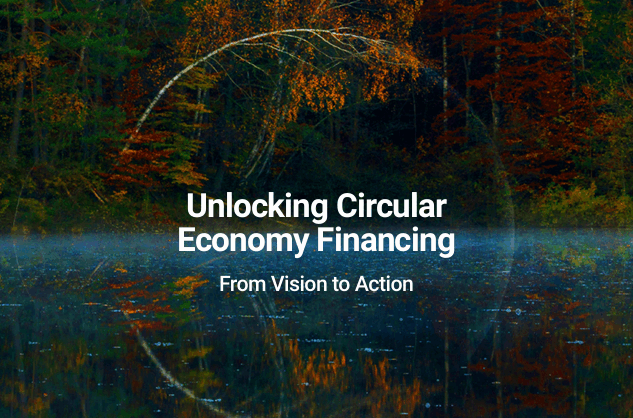Central City District Plan – Speak Up Austin

Report on the Central City District Plan Initiative
1.0 Introduction
A City Council resolution has mandated an update to the Downtown Austin Plan, resulting in a new 10-year strategic blueprint titled the Central City District Plan. The objective is to establish a renewed vision for Austin’s urban core, focusing on equitable, sustainable, and resilient development in alignment with global best practices for urban livability and inclusivity.
2.0 Geographic Scope
The plan’s vision has been expanded to encompass three adjacent districts that share a similar urban character and context. The designated areas for this comprehensive planning initiative are:
- The South Central Waterfront
- Downtown
- The University of Texas/University Neighborhood Overlay areas
3.0 Alignment with Sustainable Development Goals (SDGs)
The core mission of the Central City District Plan is to rethink urban growth to ensure a more sustainable and equitable future. This strategy is directly aligned with several United Nations Sustainable Development Goals (SDGs), which provide a framework for the plan’s objectives.
3.1 Primary SDG Contributions
- SDG 11: Sustainable Cities and Communities: The plan’s primary goal is to make the urban core inclusive, safe, resilient, and sustainable by enhancing livability and improving access to services for all residents.
- SDG 10: Reduced Inequalities: By emphasizing equity and inclusivity, the initiative seeks to ensure that the benefits of urban development are shared by all community members, addressing systemic inequalities.
- SDG 9: Industry, Innovation, and Infrastructure: The plan integrates with transformative infrastructure projects, such as Project Connect and Equitable Transit-Oriented Development, to build resilient, sustainable, and innovative urban systems.
- SDG 17: Partnerships for the Goals: The initiative is founded on a collaborative approach, inviting community members and stakeholders to form partnerships to build a shared vision that reflects collective values and aspirations.
4.0 Strategic Integration and Connectivity
The Central City District Plan serves as a vital connector that unifies disparate plans and projects. It creates a cohesive strategy by bridging the following key areas:
- Comprehensive city-wide planning
- City-wide and Downtown-specific initiatives
- Transformative work under Project Connect
- Equitable Transit-Oriented Development (ETOD) principles
5.0 Call for Stakeholder Engagement
Community members and stakeholders are formally invited to participate in shaping the future development of these three iconic Austin areas. This collaborative process is essential to building a shared vision that successfully integrates the principles of the Sustainable Development Goals into the city’s long-term growth strategy.
Analysis of Sustainable Development Goals in the Article
1. Which SDGs are addressed or connected to the issues highlighted in the article?
-
SDG 11: Sustainable Cities and Communities
- The article directly addresses this goal by discussing the “Central City District Plan” for Austin’s urban core. The stated objective is to “ensure a more equitable, sustainable, and resilient future,” which aligns with the core mission of SDG 11. The plan focuses on rethinking “how we plan for growth in the city’s urban core” and “embracing livability.”
-
SDG 10: Reduced Inequalities
- This goal is connected through the article’s strong emphasis on equity and inclusivity. The plan aims for an “equitable… future” and seeks to build a vision that embraces “inclusivity, and access to services.” The mention of “Equitable Transit-Oriented Development” further reinforces the commitment to reducing inequalities in access to urban resources and opportunities.
2. What specific targets under those SDGs can be identified based on the article’s content?
-
Target 11.3: Inclusive and sustainable urbanization
- The article’s focus on creating a “new 10-year blueprint” and a “renewed vision for Downtown” that serves as a “vital connector for existing plans, projects, and initiatives” directly relates to integrated and sustainable human settlement planning. Furthermore, the call to “invit[e] community members and stakeholders to help shape the future” embodies the participatory planning aspect of this target.
-
Target 11.2: Affordable and sustainable transport systems
- This target is explicitly referenced through the mention of “the transformative work happening under Project Connect and Equitable Transit-Oriented Development.” This indicates a focus on creating accessible and sustainable transport options as a core component of the urban plan.
-
Target 10.2: Promote universal social, economic and political inclusion
- The plan’s goal to build a “shared vision that reflects our values and aspirations” by “embracing livability, inclusivity, and access to services” directly supports the promotion of social inclusion for all residents in the urban core. The emphasis on an “equitable” future is central to this target.
3. Are there any indicators mentioned or implied in the article that can be used to measure progress towards the identified targets?
-
Implied Indicator for Target 11.3
- While no quantitative data is provided, the article implies a process-based indicator related to Indicator 11.3.2 (Proportion of cities with a direct participation structure of civil society in urban planning and management). The statement, “We’re inviting community members and stakeholders to help shape the future of three of Austin’s most iconic areas,” describes the establishment of such a participatory structure. The existence and execution of the “Central City District Plan” itself serves as an indicator of progress in integrated urban planning.
-
Implied Indicator for Target 11.2
- The article implies progress towards Indicator 11.2.1 (Proportion of population that has convenient access to public transport). By highlighting the integration of “Equitable Transit-Oriented Development” into the plan, it suggests that a key measure of the plan’s success will be the improvement of equitable access to transit, even though specific metrics are not mentioned.
-
Implied Indicator for Target 10.2
- The article implies a focus on policy and planning that promotes inclusion. The development of a plan that explicitly aims for an “equitable” future and “inclusivity” can be seen as a qualitative indicator. The success of this would later be measured by how well the plan ensures “access to services” for all groups within the community.
4. Summary Table of SDGs, Targets, and Indicators
| SDGs | Targets | Indicators |
|---|---|---|
| SDG 11: Sustainable Cities and Communities | 11.2: By 2030, provide access to safe, affordable, accessible and sustainable transport systems for all. | Implied: The integration of “Equitable Transit-Oriented Development” into the city plan, suggesting future measurement of access to public transport. |
| 11.3: By 2030, enhance inclusive and sustainable urbanization and capacity for participatory, integrated and sustainable human settlement planning and management. | Implied: The creation of a participatory planning process by “inviting community members and stakeholders to help shape the future.” The development of the “Central City District Plan” itself. | |
| SDG 10: Reduced Inequalities | 10.2: By 2030, empower and promote the social, economic and political inclusion of all. | Implied: The plan’s stated goal of achieving an “equitable” future and “embracing livability, inclusivity, and access to services” for the community. |
Source: speakupaustin.org
What is Your Reaction?
 Like
0
Like
0
 Dislike
0
Dislike
0
 Love
0
Love
0
 Funny
0
Funny
0
 Angry
0
Angry
0
 Sad
0
Sad
0
 Wow
0
Wow
0


















































.jpg.webp?itok=0ZsAnae9#)



/environment-climate-change-and-health-(ech)/water-sanitation-hygiene-and-health-(wsh)/landfill-tuvalu-36092.tmb-1200v.jpg?sfvrsn=5c21fe40_1#)




















